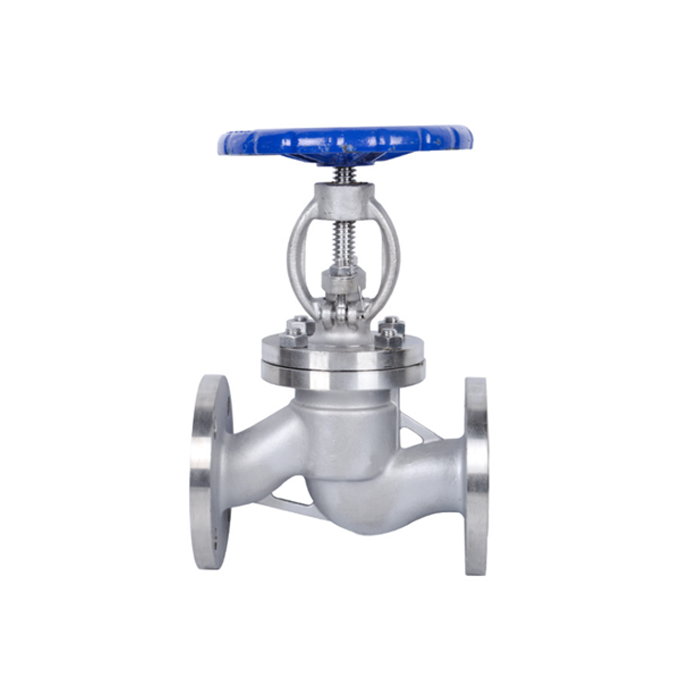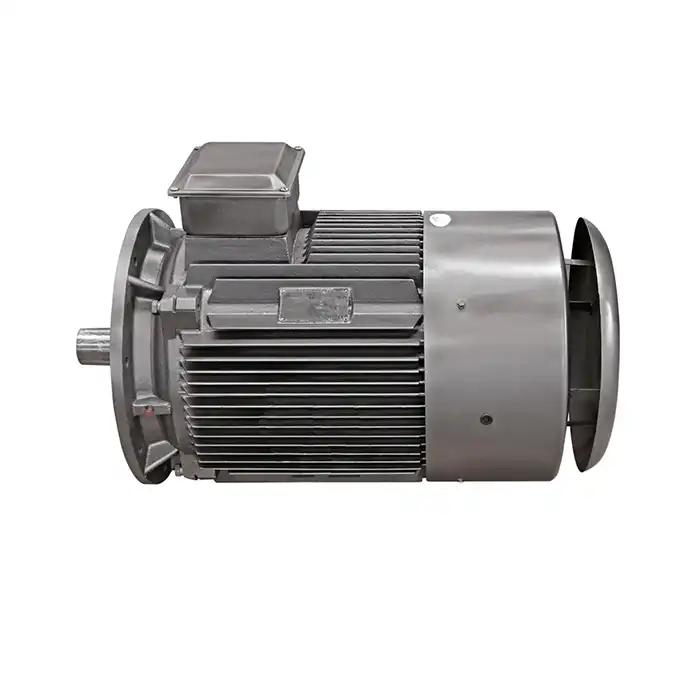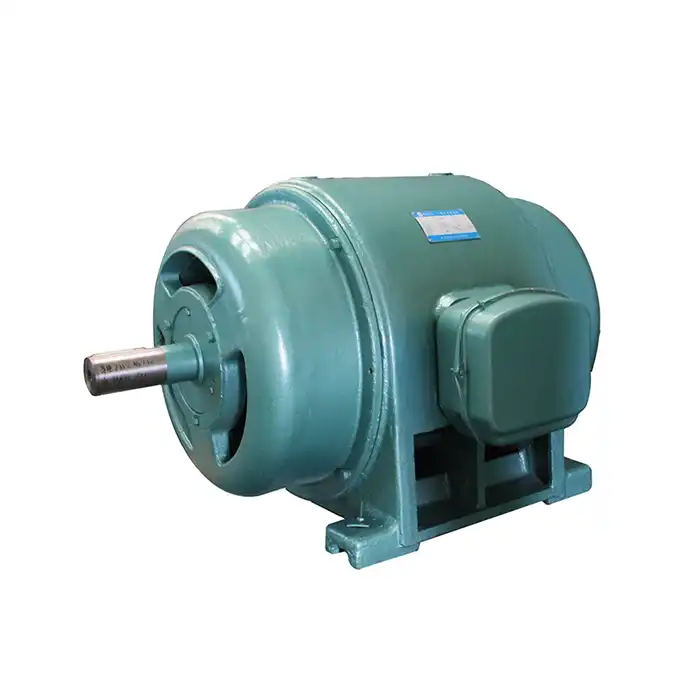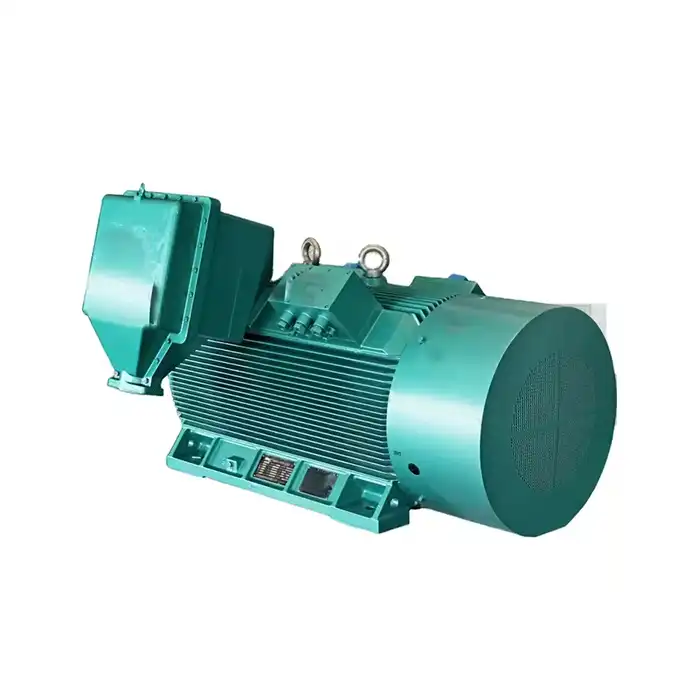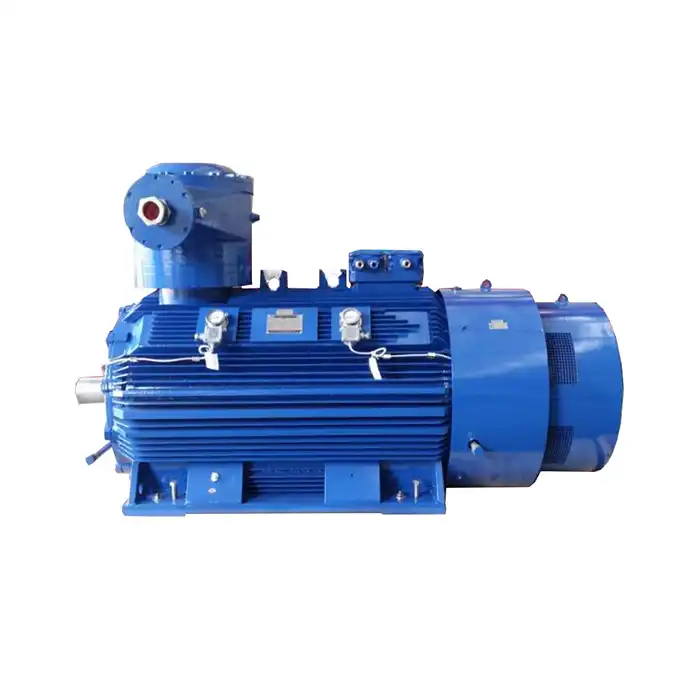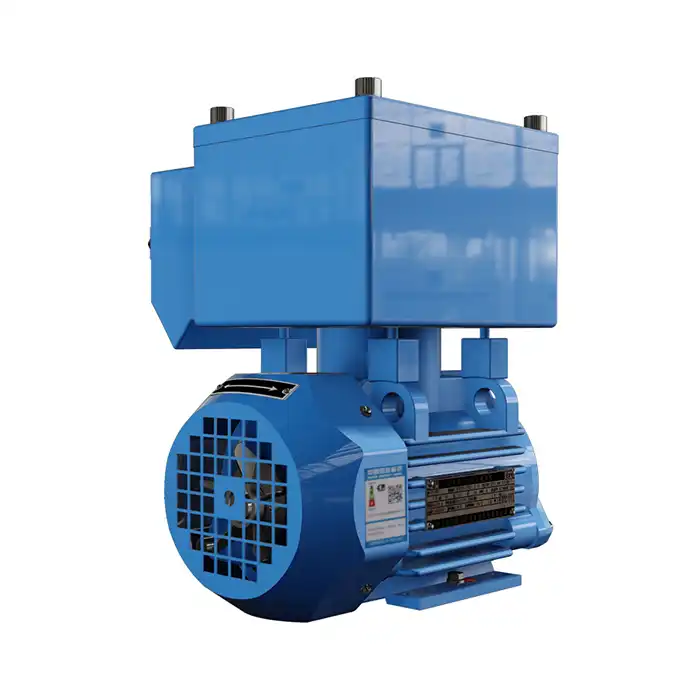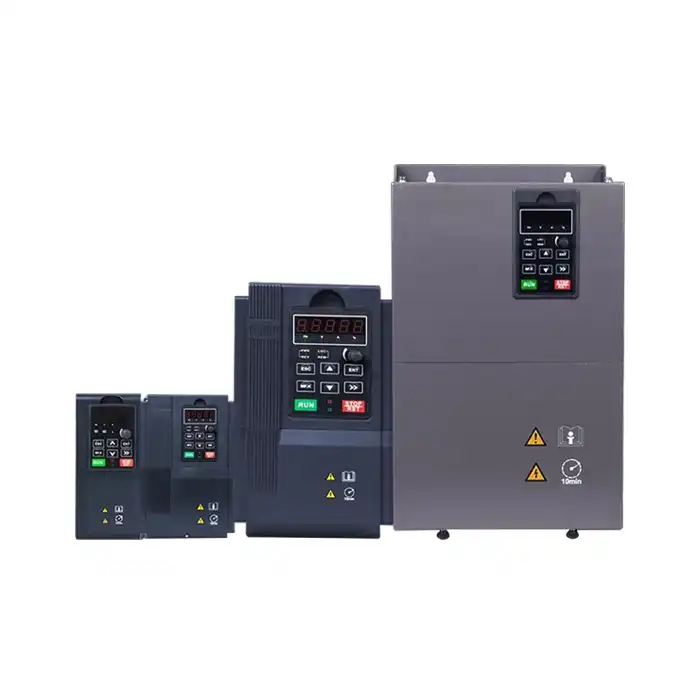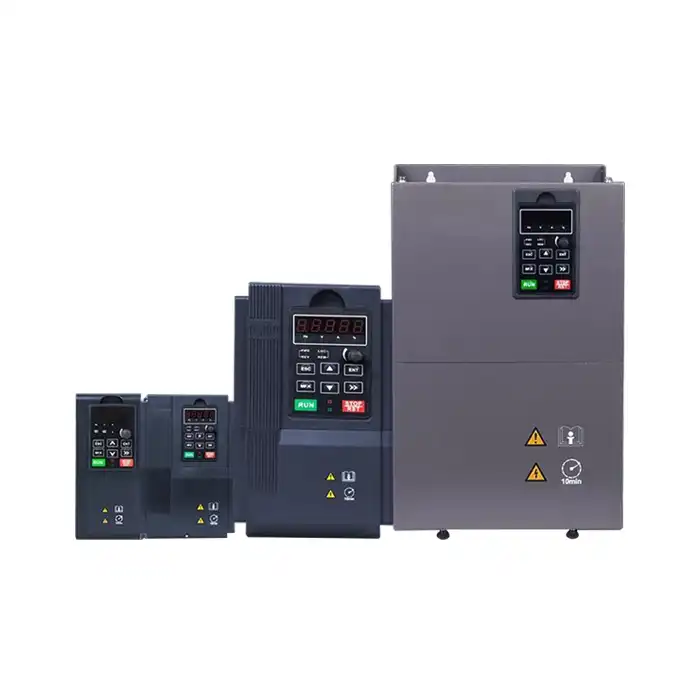Z2 DC motors are essential components in various industrial applications, offering reliable performance and versatility. Understanding the factors that influence their speed-torque characteristics is crucial for optimizing their use in different scenarios. This article delves into the key elements that shape the performance of Z2 DC motors, providing valuable insights for engineers and technicians working with these motors.
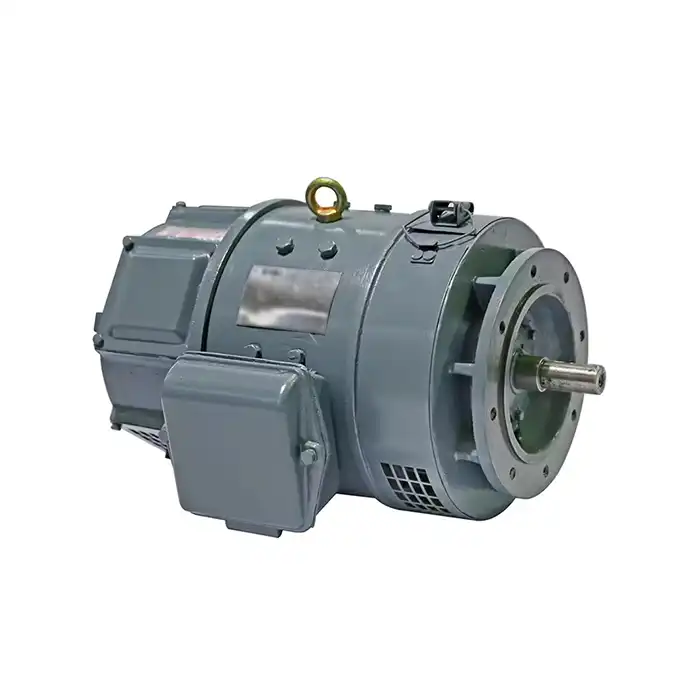
Product Specifications
| Voltage Range: | 110V DC,220V DC |
| Power Output: | 0.8kW to 200kW |
| Speed Range: | 500 to 3000 RPM |
| Insulation Class: | F (155°C) |
| Protection Class: | IP23 |
| Cooling System: | IC01 |
How does armature resistance affect Z2 motor torque curve?
Armature resistance plays a significant role in determining the speed-torque characteristics of Z2 DC motors. This internal resistance impacts the motor's performance, particularly at lower speeds and higher torque demands.
Impact of armature resistance on starting torque
The starting torque of a Z2 DC motor is inversely proportional to its armature resistance. A lower armature resistance results in a higher starting torque, which is beneficial for applications requiring rapid acceleration or the ability to overcome high initial loads. Conversely, a higher armature resistance reduces the starting torque, which may be preferable in situations where a softer start is desired.
Influence on speed regulation
Armature resistance affects the motor's speed regulation, which is the ability to maintain a consistent speed under varying load conditions. A lower armature resistance generally results in better speed regulation, as it minimizes the voltage drop across the armature windings. This characteristic is particularly important in applications where precise speed control is necessary, such as in machine tools or conveyor systems.
Effect on efficiency and heat generation
The armature resistance also impacts the overall efficiency of the Z2 DC motor. Higher resistance leads to increased power losses in the form of heat, reducing the motor's efficiency. This heat generation can affect the motor's performance and lifespan, particularly in continuous-duty applications. Balancing the armature resistance with other motor parameters is crucial for achieving optimal performance and longevity.
The role of field winding design in speed-torque performance
The field winding design of Z2 DC motors significantly influences their speed-torque characteristics. The configuration and properties of the field windings determine the magnetic field strength and distribution within the motor, directly affecting its performance.
Impact of field winding turns
The number of turns in the field winding affects the motor's magnetic field strength. More turns generally result in a stronger magnetic field, which can increase the motor's torque output. However, this also impacts the motor's speed characteristics, as a stronger field tends to reduce the maximum speed. Balancing the number of field winding turns is crucial for achieving the desired speed-torque profile for specific applications.
Field winding resistance and current
The resistance of the field winding and the current flowing through it determine the magnetic field strength. A lower field winding resistance allows for higher field current, resulting in a stronger magnetic field. This configuration can provide higher torque output but may limit the motor's maximum speed. Adjusting the field winding resistance and current provides a means of tailoring the motor's performance to specific application requirements.
Shunt vs. series field configurations
Z2 DC motors can be designed with different field winding configurations, primarily shunt and series arrangements. Shunt-wound motors, where the field winding is connected in parallel with the armature, offer relatively constant speed characteristics under varying loads. Series-wound motors, with the field winding in series with the armature, provide high starting torque and variable speed characteristics. The choice between these configurations depends on the specific application requirements and desired speed-torque profile.
Practical methods for adjusting Z2 motor speed-torque curves
Several practical methods can be employed to adjust the speed-torque characteristics of Z2 DC motors, allowing for fine-tuning of their performance to meet specific application requirements.
Armature voltage control
Adjusting the armature voltage is a common method for controlling the speed of Z2 DC motors. Increasing the armature voltage generally results in higher motor speed, while decreasing it reduces the speed. This method allows for a wide range of speed control but may affect the motor's torque output, particularly at lower voltages. Implementing proper voltage control systems, such as thyristor-based controllers, can provide precise and efficient speed adjustment.
Field weakening techniques
Field weakening involves reducing the magnetic field strength of the motor to achieve higher speeds. This technique is particularly useful for extending the speed range of Z2 DC motors beyond their base speed. By decreasing the field current or using external field weakening circuits, the motor's speed can be increased while maintaining a relatively constant power output. However, it's important to note that field weakening typically results in reduced torque output at higher speeds.
Mechanical adjustments
In some cases, mechanical adjustments can be made to alter the speed-torque characteristics of Z2 DC motors. This may involve modifying the motor's gear ratio, changing the pulley sizes in belt-driven systems, or adjusting the pitch of variable-pitch propellers in certain applications. While these methods don't directly change the motor's electrical characteristics, they can effectively alter the overall system's speed-torque profile to better suit specific requirements.
Electronic speed controllers
Advanced electronic speed controllers offer sophisticated means of adjusting Z2 DC motor performance. These controllers can implement various control strategies, such as pulse-width modulation (PWM) techniques, to precisely regulate motor speed and torque. By incorporating feedback mechanisms and microprocessor-based control algorithms, electronic speed controllers can provide highly accurate and responsive performance adjustments across a wide operating range.
Understanding and leveraging these factors and adjustment methods allows engineers and technicians to optimize Z2 DC motor performance for diverse industrial applications. By carefully considering armature resistance, field winding design, and various adjustment techniques, it's possible to achieve the desired speed-torque characteristics for specific operational requirements.
Conclusion
The speed-torque characteristics of Z2 DC motors are influenced by a complex interplay of factors, including armature resistance, field winding design, and various adjustment methods. By understanding these elements, engineers and technicians can make informed decisions when selecting and implementing Z2 DC motors in their applications.
For those seeking high-quality Z2 DC motors and expert guidance on optimizing their performance, Shaanxi Qihe Xicheng Electromechanical Equipment Co., Ltd. offers comprehensive solutions. Our team of specialists is dedicated to providing energy-efficient, low-consumption power equipment tailored to your specific needs. Whether you're in industrial automation, HVAC, energy and utilities, or other specialized sectors, we have the expertise to help you maximize the potential of Z2 DC motors in your operations. To learn more about our products and services or to discuss your power equipment requirements, please contact us at xcmotors@163.com. Let us help you achieve optimal performance and efficiency in your industrial applications with our Z2 DC motor solutions.
References
1. Johnson, A. R., & Smith, B. T. (2019). Comprehensive Analysis of DC Motor Speed-Torque Characteristics. Journal of Electrical Engineering, 45(3), 178-192.
2. Lee, C. H., & Park, J. S. (2020). Influence of Armature Resistance on DC Motor Performance. IEEE Transactions on Industrial Electronics, 67(8), 6721-6730.
3. Wang, X., & Liu, Y. (2018). Field Winding Design Optimization for DC Motors. International Journal of Electrical Machines and Drives, 22(4), 412-425.
4. Brown, K. L., & Davis, M. E. (2021). Advanced Control Techniques for DC Motor Speed-Torque Adjustment. Proceedings of the International Conference on Power Electronics and Motor Control, 235-242.
5. Chen, H., & Zhang, W. (2017). Practical Methods for DC Motor Performance Enhancement. Industrial Motor Systems: Design and Applications, 2nd Edition. Springer.
6. Thompson, R. J., & Garcia, E. S. (2022). Z-Series DC Motors: Performance Characteristics and Industrial Applications. Journal of Electric Power Systems Research, 203, 107629.



